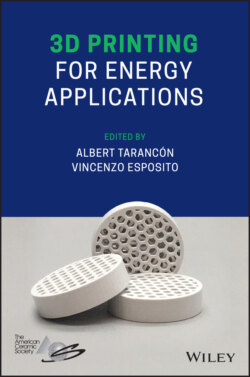Читать книгу 3D Printing for Energy Applications - Группа авторов - Страница 30
1.5.1 Common AM Technologies for Green Body Manufacturing
ОглавлениеThe entry‐level technology by which a green body component is commonly manufactured is through filament extrusion [92]. There is a variety of feedstock for extrusion‐based AM systems that have been engineered for this purpose. For high throughput industrial application, binder jetting is the fastest build method of all industrially applicable manufacturing methods and is thus competitive in many cases to laser PBF. Since no melt pool and plasma is generated during manufacture, the general tolerances are superior to those of laser PBF. As the green body part shrinks up to 30% during sintering, tolerances are further enhanced. The final method for green body manufacture using AM is by employing vat photopolymerization, where the photopolymer acts as the matrix material and is blended with the powdered filler. This method has a very low throughput yet is still highly industrially relevant, given that vat photopolymerization exhibits a spatial resolution, one order of magnitude better than that of the former methods [93]. Whereas there are no commercially available systems that allow for functionally graded materials employing hybrid AM/sintering process chains, this technology is highly relevant for manufacturing geometrical gradients in materials. Micro components made from metamaterials with topology optimized unit cells can thus be manufactured employing vat photopolymerization and sees usage ranging from medical components through energy applications.
